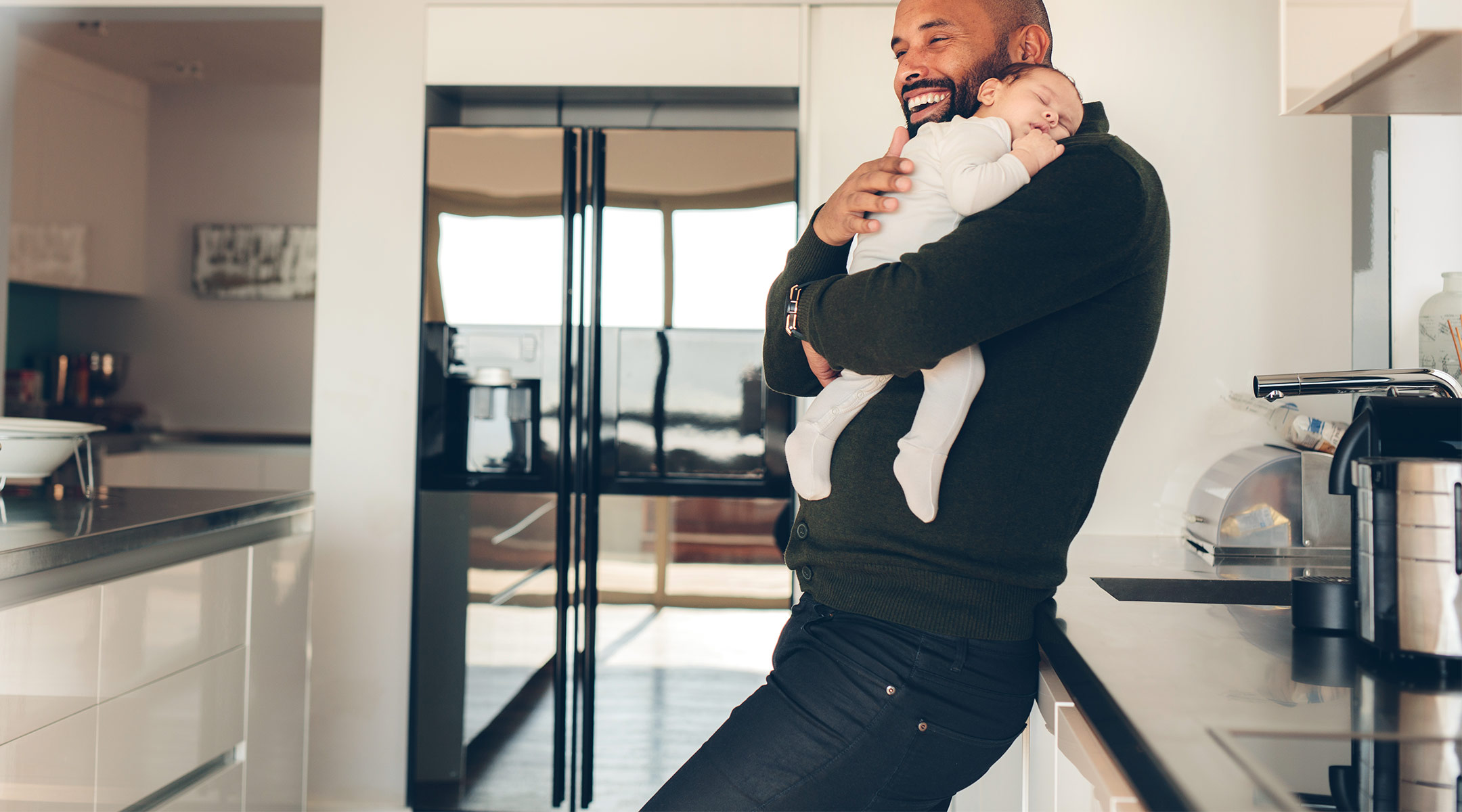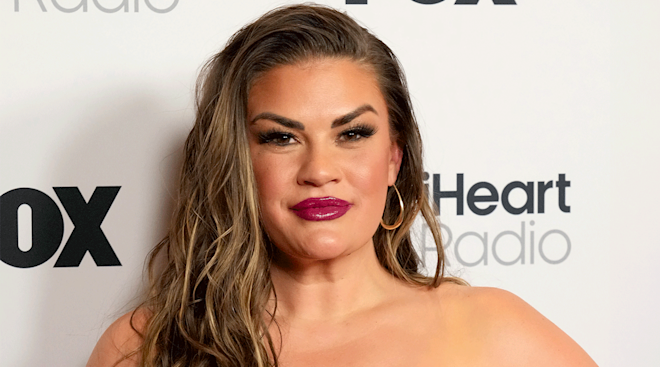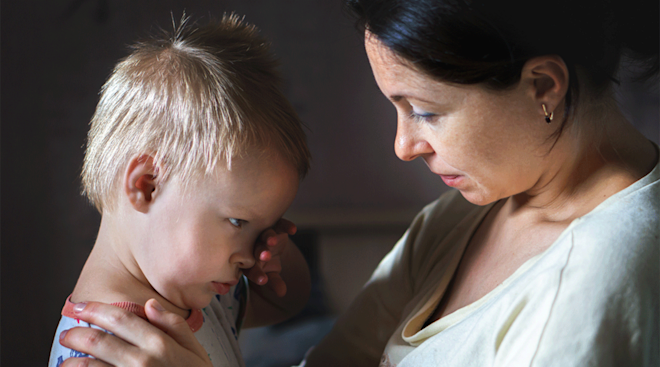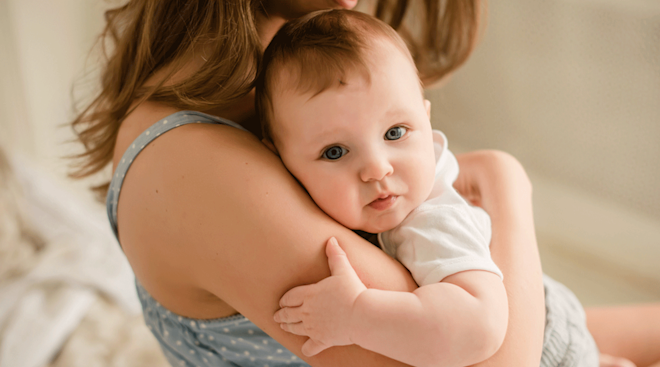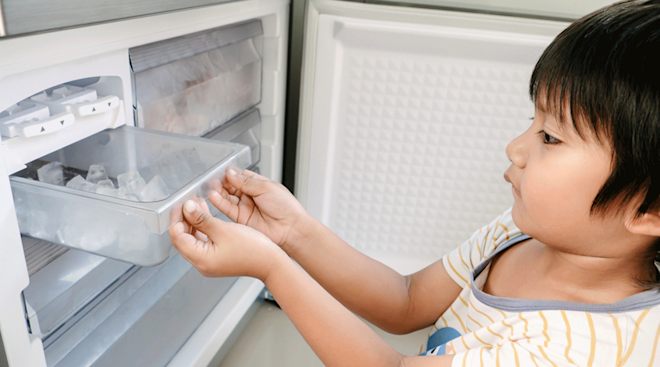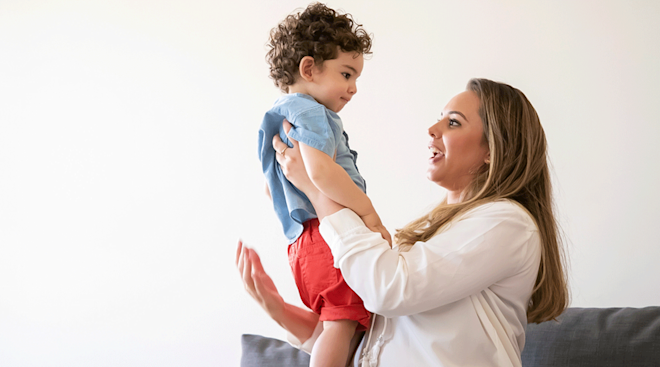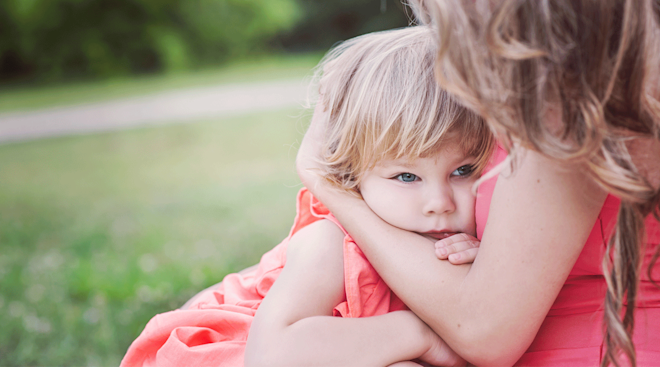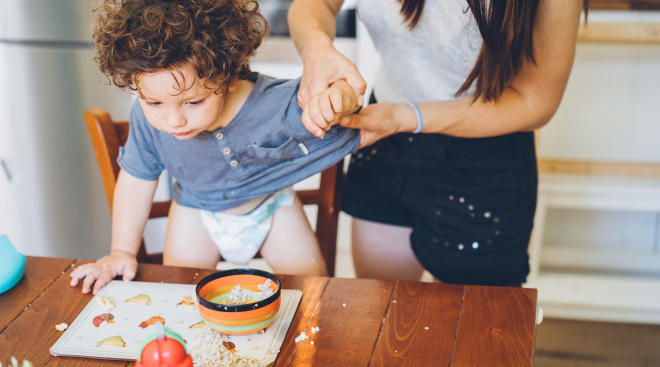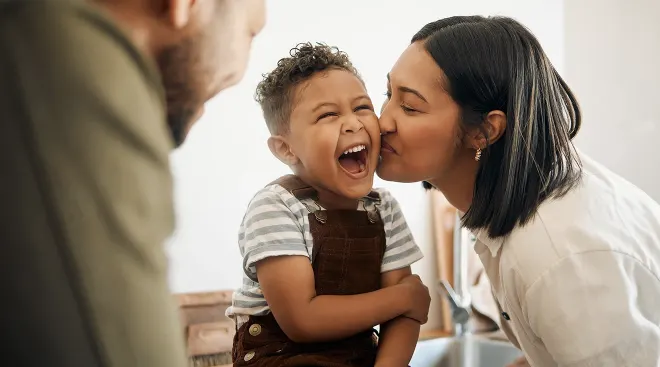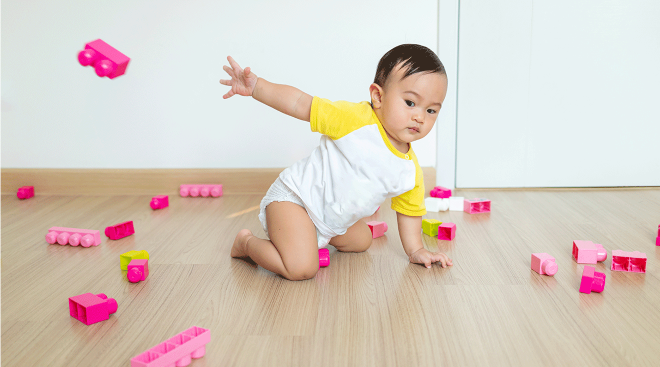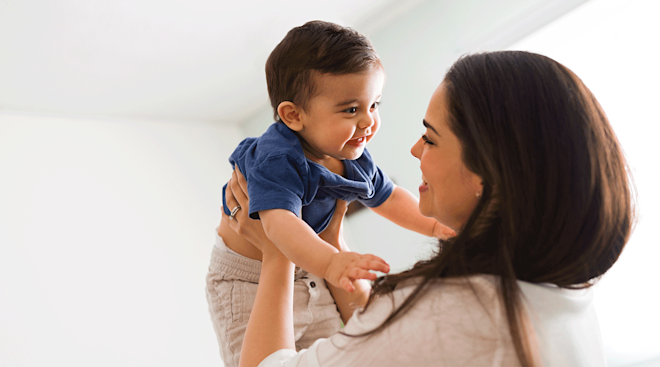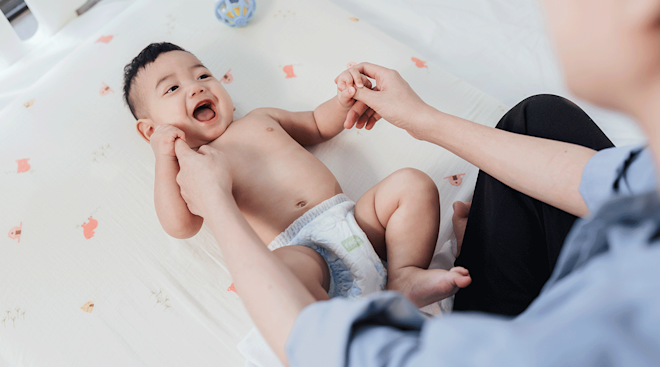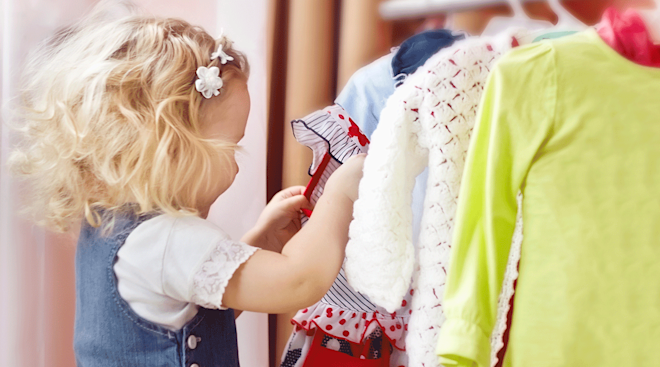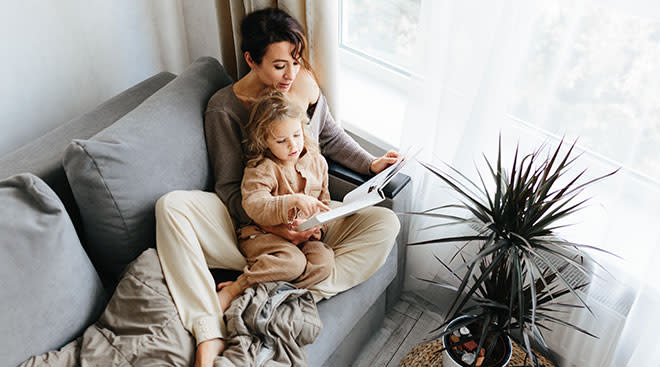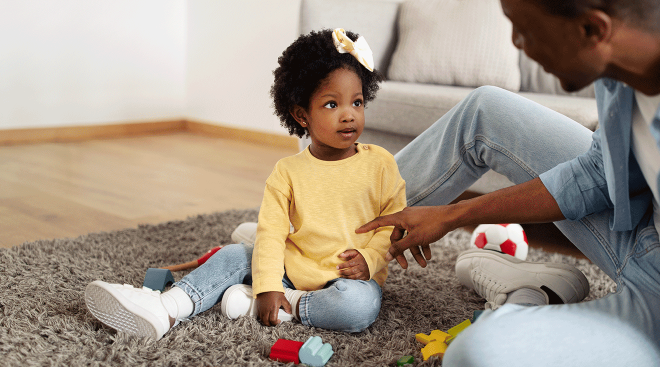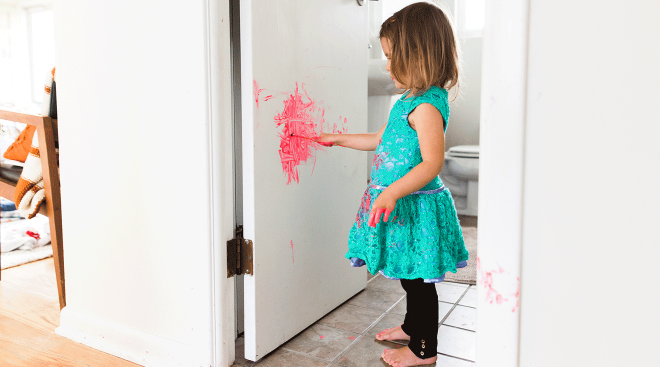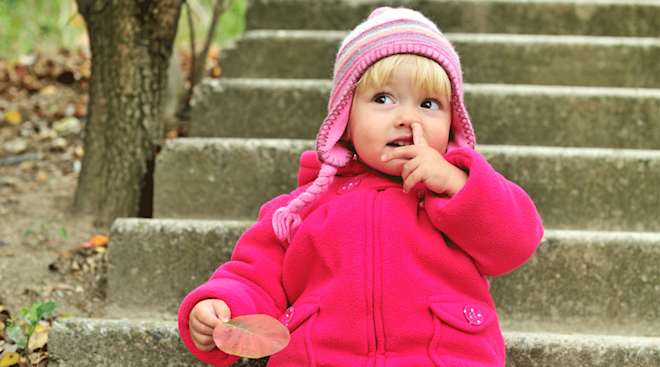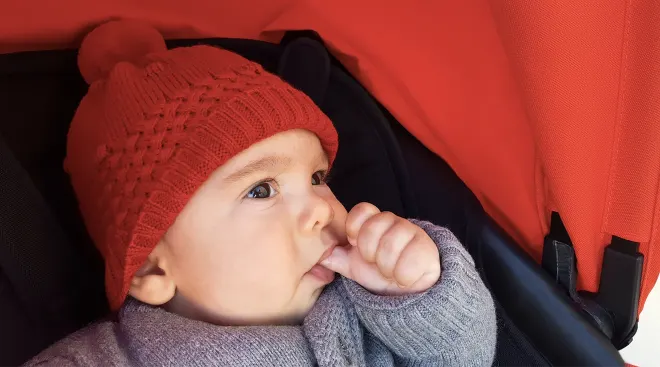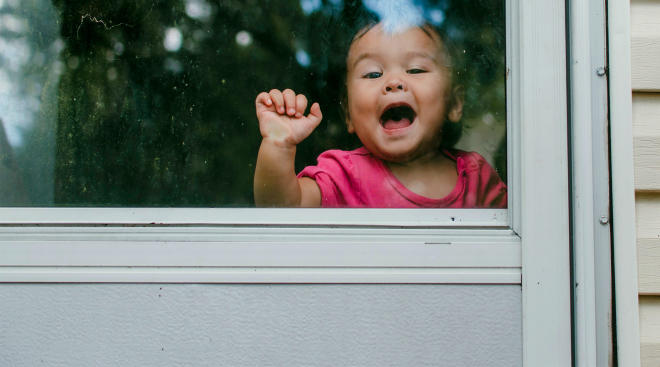Why Babies Stop Crying When Parents Stand Up
Fatherly is a publication for modern fathers looking to make the best of a good situation.
Newborns hate it when you sit down. They are like tiny little drill sergeants, forcing new parents to stand at attention or march back and forth across the living room in order to get them to stop kicking and crying. But why? What difference does it make to an infant whether you’re standing or sitting, and why is early parenting more a game of non-stop plodding than one of tranquil sitting and cuddling?
The answer has everything to do with the flight response human evolved after a couple of millennia spent, at least in part, getting eaten by very large cats. When the person holding you is standing up, ready to run, it makes sense to be still so as not to interfere with their flight.
“The infant calming response to maternal carrying is a coordinated set of central, motor, and cardiac regulations,” according to the authors of a 2013 study in Current Biology, who observed human and mouse mothers trying to soothe their fussy newborns. “Infants under six months of age carried by a walking mother immediately stopped voluntary movement and crying and exhibited a rapid heart rate decrease.” This can be exhausting for parents, but it may also be an evolutionary boon. “The calming responses may increase the survival probability of the infant in cases of emergency escape by the mother-infant dyad,” the researchers added.
For the study, scientists attached ECGs to 12 healthy infants and asked their mothers to put them down in a crib, hold them while seated, or carry them around the room for 30 seconds. The results confirm what most parents already know—babies are happy when you’re walking, peeved when you’re sitting, and downright miserable when you put them in a crib. But this study attached numbers to the parenting trope, and tracked how each infant’s heart rate slowed to a relaxing lub-dub whenever their moms stood up.
“Heart rate variability analyses revealed that…[heart rate decrease] was significantly higher during carrying than during holding,” the authors write. “These data suggest that infants were more relaxed during carrying than during holding, not only behaviorally but also physiologically.”
Here’s a video of one of those experiments. Notice how, when the mother is walking, her baby’s heart rate slows. (The graph along the bottom of the screen indicates the interbeat interval, which is the inverse of the heart rate, so higher spikes on the graph represent lower heart rates. Confusing, we know.)
The same phenomenon appears to exist in mice. Researchers found that baby mice calm down when their mothers lift them by the napes of their necks and that, just like human parents, mice have trouble holding onto their offspring when they wiggle or go unnaturally limp. For the authors, this observation provided a clue as to why babies evolved to chill out when they’re being held. It’s easier for a parent to keep on holding a relaxed baby—and that means they can both make a quicker escape if danger strikes.
After rescuing a few of her healthy offspring in the following video clip, a mother mouse discovers that one of her litter goes unnaturally limp when she tries to pick him up (blame the researchers—they drugged the baby mouse for the experiment). She gets the mouse pup eventually, but only after several attempts:
The findings have immediate implications for parents in search of a scientifically surefire way to calm their kids after painful vaccines or scary thunderstorms: start pacing. By tapping into an evolutionary pathway as old as our most distant mammalian relatives, you can lower their heart rates and help them calm them down. But, for parents who still can’t sit down without setting off crying jags, this lesson in speculative evolutionary biology may come as cold comfort—especially seeing as the study involved only 12 kids.
But, the researchers are hopeful a better understanding of infant crying could help parents ease some of their frustration the next time baby’s inconsolable. “A scientific understanding of this physiological infant response could prevent parents from overreacting to infant crying,” the authors wrote. “Such understanding would be beneficial to parents by reducing frustration, because unsoothable crying is a major risk factor for child abuse.”
Please note: The Bump and the materials and information it contains are not intended to, and do not constitute, medical or other health advice or diagnosis and should not be used as such. You should always consult with a qualified physician or health professional about your specific circumstances.
Navigate forward to interact with the calendar and select a date. Press the question mark key to get the keyboard shortcuts for changing dates.
































